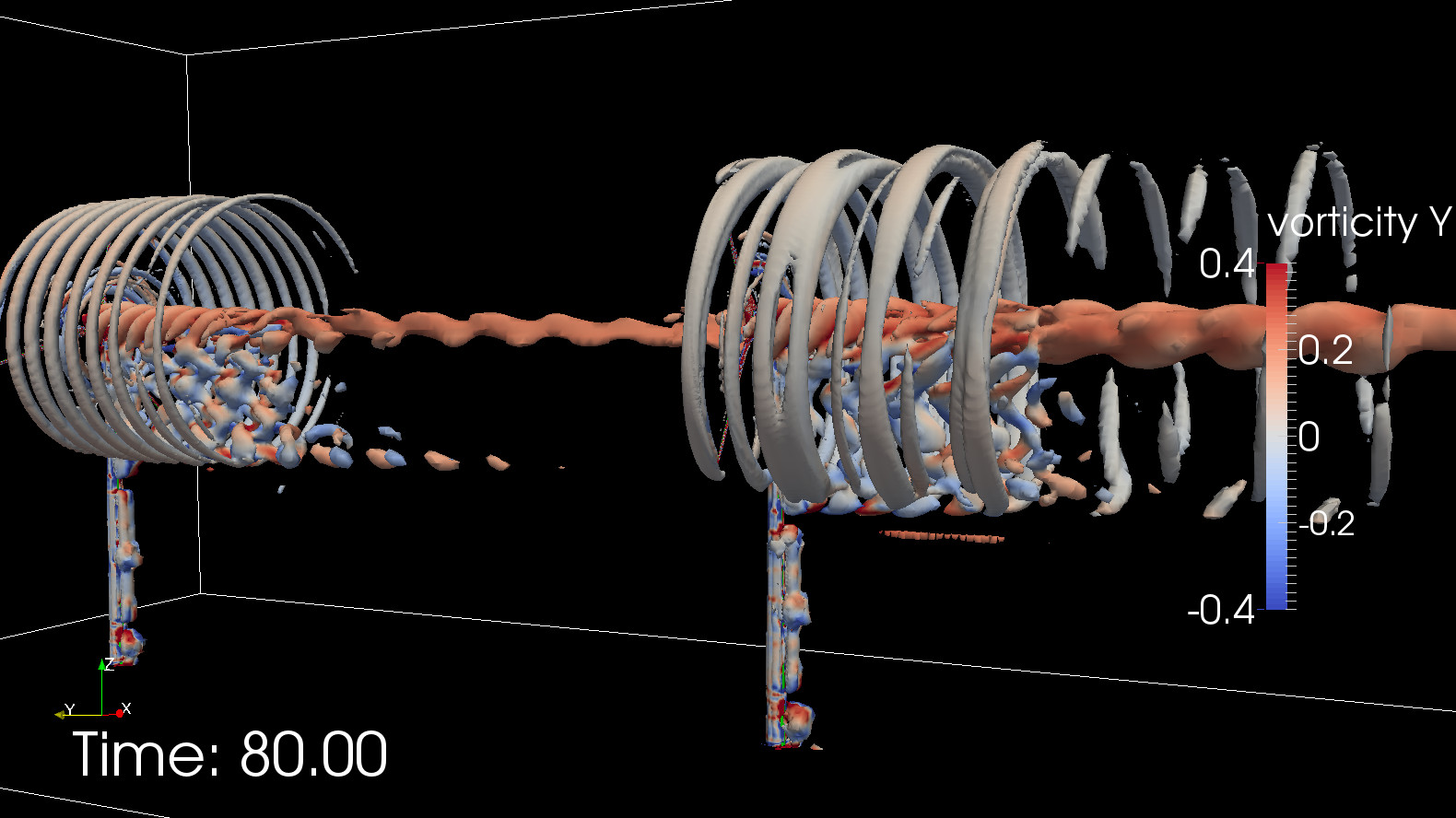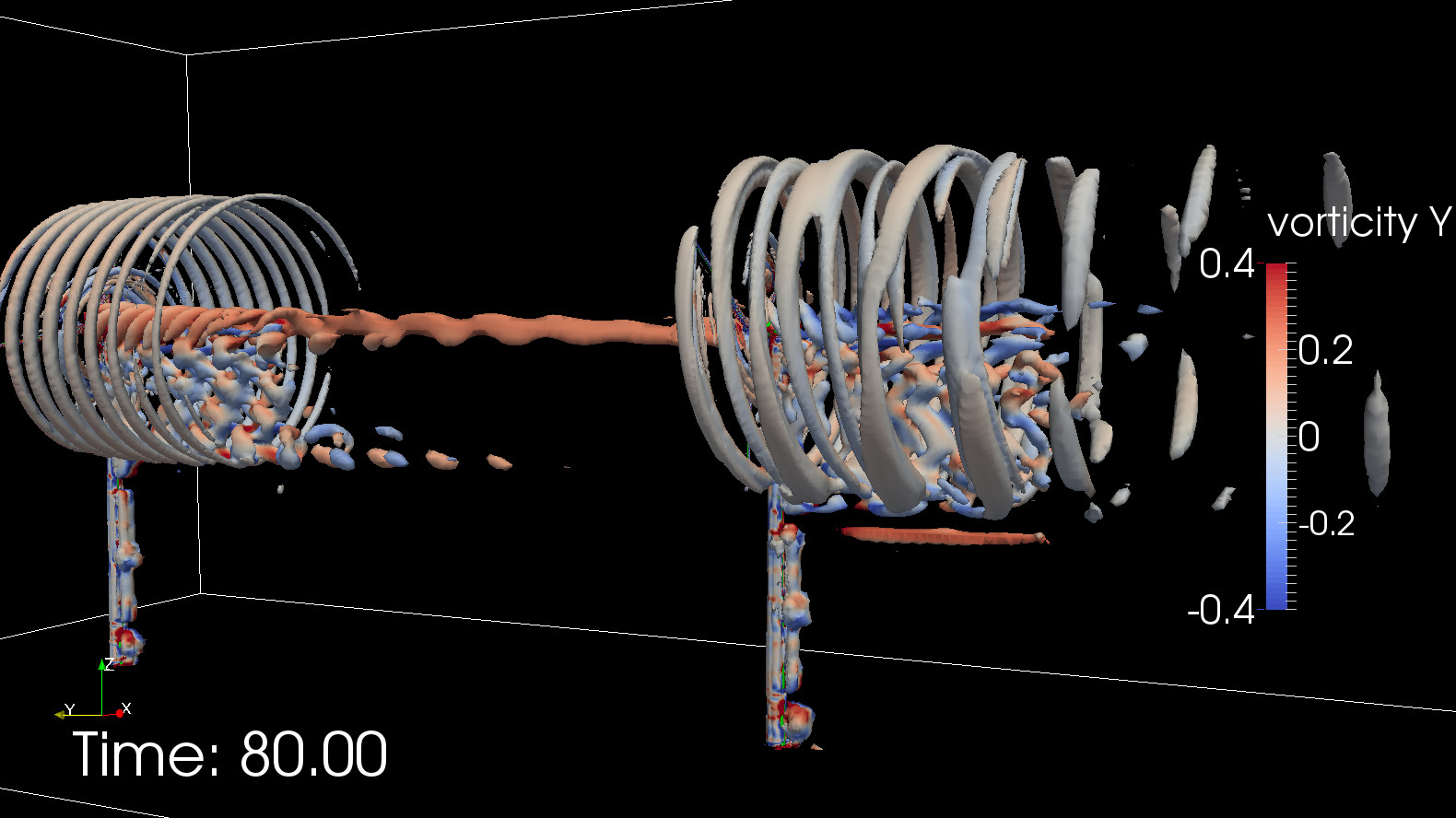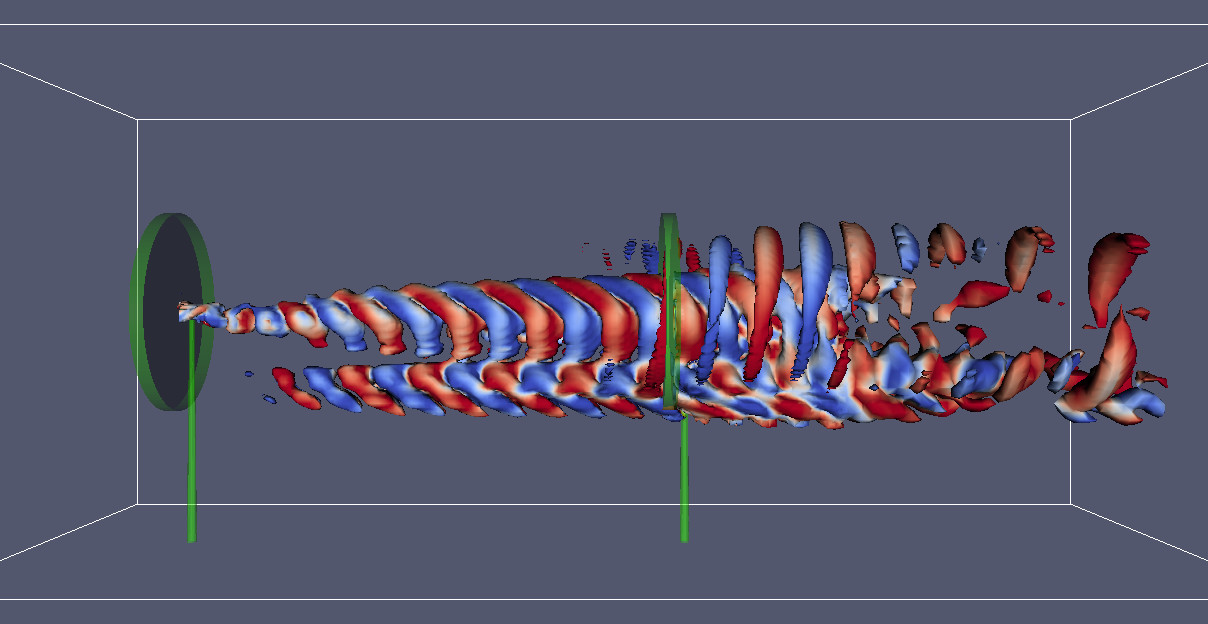Wind energy is one of the major forms of renewable energy. High fidelity, blade resolving simulation of the wind turbine flows in this study is more likely to provide an accurate performance estimation of generators in a wind farm. The fully transient wind driven simulations of the generators also give us the opportunity to study the dynamic interaction between turbine blades and tower, interaction between between generators within a wind farm, and dynamic control strategies of the generators. OpenFOAM is used for this study.

Iso-rotating Serial Configuration
In this serial configuration of wind generators, the two turbines are rotating in the same direction. The graphics shows the Q-criterion isosurface, which is a popular method for turbulence visualization. Turbulent Vorticities mainly come from three sources - blade tip, blade root/nacelle, and blade-tower interference.

Contra-rotating vs. Iso-rotating
Contra-rotating configuration here, meaning the two turbines are rotating in opposite ways, have vastly different flow pattern behind the rear generator center, compared with iso-rotating configuration. The center vortex is reduced rather than strengthened.

Proper Orthogonal Decomposition
Proper Orthogonal Decomposition (POD) can extract coherent structures in a turbulent flow field. It can be used for flow analysis or model reduction. The figure shows the most energy containing structure in the flow fluctuation for the contra-rotating configuration. It mainly represent the blade-tower interference and center vortex.

Another structure in the flow
The figure shows the second most energy containing structure. It mainly represent the helical pattern. When examing the frequency associated with the structure, it is roughly three times that of the previous one. This basically says each turbine have three blades.